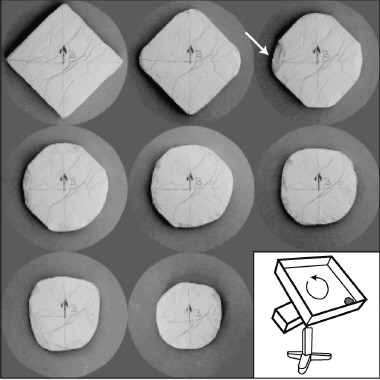A question that has been around since the time of Aristotle -- what shape is a pebble? -- has now been solved by physicists in France and the US. Douglas Durian of the University of Pennsylvania and colleagues in Strasbourg say that a pebble is "a nearly round object with a near-Gaussian distribution of curvatures". All pebbles, regardless of their original shape, end up with a similar shape that depends solely on how the pebble was eroded over time. The results could help geologists determine the history of a pebble simply by looking at its geometry (Phys. Rev. Lett. 97 028001).

Most attempts to describe the shape of a pebble have involved measuring the “aspect ratios” — that is, the ratio of the longest to the shortest axis — of pebbles. However, such methods cannot distinguish one shape from another and do not give geologists any idea about the erosion processes that led to the creation of the pebble. Geologists are interested in such processes because it would let them work out if, say, a layer of rock containing that pebble was formed from a lake, a river, an ocean shore or a desert.
In their experiment, the France-US team simulated erosion in the lab with artificial pebbles made of 5-mm thick slabs of clay that had been moulded into various shapes, such as squares, triangles and other polygons. The researchers took photos of these pebbles and looked at how the shape of the pebbles changed as they tumbled around in a spinning metal pan. They found that once the corners had been eroded away, the pebble reached a nearly round shape that progressively got smaller in size. Moreover, the final shapes of all the pebbles were similar and therefore only depend on the erosion process itself say the scientists.
The team then calculated the distribution of curvatures around the circumference of each eroded pebble. They then plotted this distribution as a graph and found that it followed a nearly Gaussian, or bell-shaped, curve. Pebbles are unlike regular objects such as spheres, which have an equal curvature over the entire surface.
According to group member Carlos Marques from the University of Strasbourg, he and his colleagues have now found a mathematical tool that can “decode” flat pebble shapes and link these to the erosion process the pebbles underwent — regardless of what shape they originally had.



